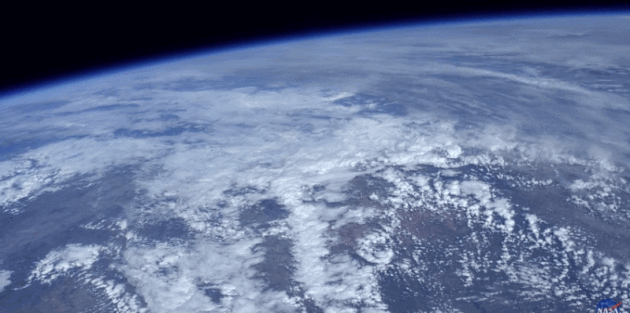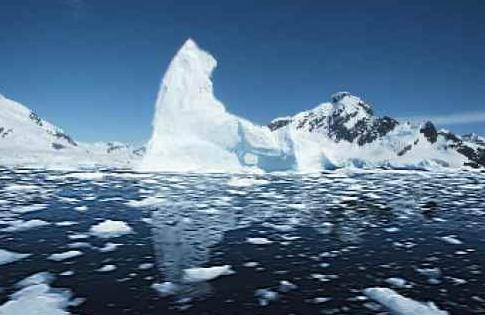30 F. high yesterday in St. Cloud.
22 F. average high on December 29.
26 F. high on December 29, 2015.
December 30, 2005:
A large swath of snowfall in the 6 to 8 inch range falls approximately
north of a line from Madison to Redwood Falls through Glencoe and
Woodbury. Even heavier snowfall occurred west of a Granite Falls to
Willmar line, where reports of between 8 and 11 inches were recorded. In
Willmar, several vehicles were reported stuck in ditches. A semi-truck
also rolled onto its side.
December 30, 1996: 6 to 7 inches of snow falls in Willmar. The new snowfall, in addition to previous heavy snowfall, caused a portion of the historical society's roof to collapse.
December 30, 1980: A 'heat wave' develops across Minnesota. Redwood Falls hits 51.
December 30, 1996: 6 to 7 inches of snow falls in Willmar. The new snowfall, in addition to previous heavy snowfall, caused a portion of the historical society's roof to collapse.
December 30, 1980: A 'heat wave' develops across Minnesota. Redwood Falls hits 51.

More Fun With Negative Numbers Next Week
Gazing at next week's predicted temperatures got me thinking about the merits of arctic air. Suspend your disbelief for just a minute. With the exception of the west coast the towns in America that avoid the coldest fronts are susceptible to hurricanes.
Would you prefer a handful of Siberian slaps, or just one Texas-size storm with 130 mph winds passing over your house? The west coast avoids hurricanes and numbing encounters, but is susceptible to earthquakes, tsunamis and rare volcanic eruptions. Even Hawaii suffers floods & occasional hurricanes.
Perfect weather only exists on postcards.
O.K. I'm just rationalizing next week's tormenting temperature tumble; another subzero shot by mid-January. It won't be as cold as December 18 (-20F in the metro) but the cold will linger longer. Not hard to believe, considering our coldest weather, on average, arrives about 3 weeks after the Winter Solstice.
A couple inches of snow may fall by Tuesday, but no big storms are on the horizon yet. Enjoy a brief New Year's Day thaw - next week will feel like a refreshing slap across the face.
Dueling Weather Models. Both ECMWF (European) and NOAA's GFS model show a significant cooling trend next week, although not as harsh as a couple weeks ago. The European model is considerably colder than GFS, which keeps MSP metro temperatures generally above 0F the latter half of next week. MSP Meteograms above: WeatherBell.
Officials Warn of "Blow Ice" on Minnesota Roads. Even though many Minnesota roads are elevated (to give snow someplace to go after a big storm) strong winds can cause snow to drift onto highway surfaces, setting the stage for icing. Here's an excerpt from St. Paul Patch: "...The Minnesota State Patrol says when driving in poor conditions, motorists should:
- Slow down
- Not use your cruise control
- Increase your following distance
- Give yourself extra time to get to your destination
- Line up a sober ride or stay put if you have been drinking..."
New Year's Eve Weather Preview. Expect lukewarm conditions from Houston and New Orleans to Miami, otherwise heavy jackets and coats will be appropriate. Much of the west coast looks damp and chilly; temperatures in the teens when the ball drops over northern tier cities. Map: Aeris AMP.
Times Square Outlook. Models hint at a passing shower Saturday night around midnight; temperatures in the upper 30s in New York City.
Twin Cities New Year's Eve: Nippy, But Quiet. Expect upper teens to around 20F under a partly cloudy sky - no weather drama expected Saturday night.
Snow Season For Pacific Northwest Already Half Over. On average, half a winter's worth of snow has fallen across much of Washington State and Oregon by late December. From Denver to the Twin Cities and Indianapolis we don't reach half time in the snow department until the second and third week of January.

Snow Belt Shifts South and East Within 8-10 Days? GFS guidance from NOAA shows a snowy stripe from north Texas and Oklahoma into Arkansas, the Carolinas and Mid Atlantic between roughly January 6-8, 2017. Circle your calendars. Much of the USA is due for at least a cosmetic snowfall. 10-Day total snowfall product: Tropicaltidbits.com.

* A coastal storm will bring heavy snow and strong winds to parts of New England through Friday.
* While areas like New York City and Boston will mainly see cold rain from this system, snow will pile up in interior New England, with up to a foot and a half possible. Winter Storm Warnings are in effect for these areas.
* This system will also bring high winds with it, gusting up to 50 mph at times near coastal areas including Boston and Portland, ME.



Boston, MA:

Burlington, VT:

Gray, ME (covering Portland):

Caribou, ME:



Summary: A coastal storm will bring heavy snow to interior New England over the next 24-48 hours, with snow totals of over a foot likely in parts of Vermont, New Hampshire and Maine. While areas like New York City and Boston may see some early morning or overnight snow (with little – if any – accumulation), most of the precipitation will be in the form of rain. Winds will also be on the increase as the system strengthens, and areas like Boston and Portland, ME have the potential for 50 mph wind gusts as we head into tonight. Wind Advisories and High Wind Warnings are in place along the coast.
D.J. Kayser, Meteorologist, AerisWeather
The Dangers of Hypothermia. A slow drop in body temperature, hypothermia, can be fatal if not caught in time. NOAA has good advice on symptoms and prevention: "When
your body temperature sinks below 96°F, you have hypothermia, a serious
health hazard that occurs when body temperature is lowered to much. Get
medical attention immediately. Move the victim inside to a heated
location and begin warming the center of the body first. If the person
is unconscious, administer CPR. Hypothermia can occur in temperatures as
warm as 60°F, particularly in water or with if you are outside a long
time and not dressed for the weather. Of the approximately 1,300 people
the CDCP lists as being killed by hypothermia each year, most are
seniors, according to the National Institute of Aging, but some are
children and young adults. Everyone needs to be careful. Some medicines,
problems with circulation, and certain illnesses may reduce your
ability to resist hypothermia. As you age, your body becomes less
efficient at letting you know when you are too cold. In addition, older
people tend not to shiver effectively, one of the ways the body warms
itself up. Remember these tips to help prevent hypothermia:
- Dress in layers
- Wrap up well when going outside in the cold.
- Avoid breezes and drafts indoors.
- Eat nutritious food and wear warm clothes to ward off winter chill.
- Wear a warm hat in the winter.
- Eat hot foods and drink warm drinks several times during the day.
- If you live alone, ask a family member of neighbor to check on you daily or have a camera installed that a family member can view on their computer.
- Ask your doctor if any medicine you're taking increases your risk of hypothermia. Drugs that may cause a problem include barbiturates, benzodiazepines, chlorpromazine, reserpine, and tricyclic antidepressants..."
File photo: NOAA.
Map credit: "A University of Iowa study has found that the risk of flooding is changing in the United States, and the changes vary regionally. The threat of moderate flooding is generally increasing in the northern U.S. (red areas) and decreasing in the southern U.S. (blue areas), while some regions remain mostly unchanged (gray areas). The findings come from comparing river heights at 2,042 locations with NASA satellite information showing the amount of water stored in the ground. The study was published in the journal “Geophysical Research Letters.” Image courtesy of the American Geophysical Union.
Photo credit: "Jim Stefkovich has led the Birmingham office of the National Weather Service for more than 11 years. He will retire after 35 years with the weather service on Dec. 30." (Photo courtesy of Jim Stefkovich),

A Celebration of Clouds: From Space, Earth Has an Elegant Atmosphere. Here's an excerpt of a good read at NASA's Earth Observatory: "Earth has been referred to as "the blue planet” due to its abundance of water. "The cloudy planet” would be equally appropriate. At any given time, about two-thirds of Earth’s surface is covered by these masses of water and ice particles suspended in the atmosphere. Clouds can be a nuisance for scientists trying to use satellites to observe features on the surface—such as volcanic eruptions, floods, or phytoplankton blooms. But for some scientists, clouds are exactly what they want to see. Clouds help make the weather and affect Earth’s climate, and they can make a difference in the success or failure of efforts to simulate both. (Correctly representing clouds in climate models, it turns out, is really hard to do). But sometimes, clouds manifest in such a way that they simply inspire awe..."
Image credit: "Nearly 70 percent of Earth's surface is covered by clouds at any given time. While cloud cover can obscure the surface and frustrate satellite imagery of land and sea, clouds offer a beautiful glimpse of our atmosphere and its processes." (NASA Earth Observatory image by Joshua Stevens, using Blue Marble imagery.)
Solar Looks to Outpace Natural Gas and Wind. Scientific American reports: "2016 is shaping up to be a milestone year for energy, and when the final accounting is done, one of the biggest winners is likely to be solar power. For the first time, more electricity-generating capacity from solar power plants is expected to have been built in the U.S. than from natural gas and wind, U.S. Department of Energy data show. Though the final tally won’t be in until March, enough new solar power plants were expected to be built in 2016 to total 9.5 gigawatts of solar power generating capacity, tripling the new solar capacity built in 2015. That’s enough to light up more than 1.8 million homes..."

Five Resolutions to Simplify Your Tech Life. Simplification sounds good - although I suspect it's impossible. Here's an excerpt from a worthy New York Times post: "...If
you are like most people, there are things you do with tech that could
use some tweaking. Strengthening your password security, for one, would
benefit you tremendously in an era when hacks are rampant. For another,
purging the e-junk you have accumulated over the years would help the
environment and your sanity. While you’re at it, start doing maintenance
on your electronics to make sure they work smoothly this year. Here are
my top recommendations for resolutions to abide by to make tech less
frustrating in the new year..."
For Better or Worse: New Books Forecast The Next Technologies. Here's an excerpt from a New York Times book review: "...But
wait. What happens when the 3.5 million Americans who drive trucks for a
living and the three million Americans who work on farms get booted
from their jobs by Uber-bots? What kind of social safety net might
soften the blow of that kind of sudden mass unemployment? What kind of
political movement might oppose the rise of a new, monopolistic
techno-agricultural power? What are the ecological implications of
putting food production in the hands of Silicon Valley tech companies?
These are the biggest, most important questions, and the ones on which
futurist thinking is most conspicuously absent..."
When Robots Take Jobs, Workers Deserve Compensation.
Technology will save us? Government will provide a safety net when
entire industries are disrupted? Or is this a matter of personal
responsibility - learning new skills to remain perpetually employable?
Here's an excerpt from Financial Times: "...Stressing
that technology was not destiny, the report argued it was too soon to
abandon the possibility of near-full employment. “The issue is not that
automation will render the vast majority of the population
unemployable,” wrote Jason Furman, chair of the Council of Economic
Advisers. “Instead, it is that workers will either lack the skills or
the ability to successfully match with the good, high paying jobs
created by automation...”
Purify Yourself in the Waters of Lake Minnetonka?
Or the Minnesota River at Henderson. That's where the iconic water
scenes in the movie "Purple Rain" were apparently shot, based on
intelligence gleaned durinig our Paisley Park tour
yesterday. It was well worth the time and money. Prince was not only a
creative genius, but an accomplished businessman. It's rare to have both
skills tied up in one extraordinary person. We were lucky to have him
nearby - we miss you Prince Rogers Nelson. Your work continues to
inspire.
Greyhound Bus Museum in Hibbing. I had no idea, but Atlas Obscura set me straight: "The
name “Greyhound” apparently came from Wickman’s sighting of his bus’
reflection in the glass window of a storefront. The sleek gray
reflection zooming by reminded him of a racing dog speeding down the
track. That sleek image became one of the best known brands in the U.S.
The buses themselves took on a new meaning in 1961, becoming a symbol of
the Civil Rights movement when a bus carrying Freedom Riders was
firebombed in Alabama.
Images of the gutted bus were representative of the violence committed
against black protesters by hate groups. The Greyhound Bus Museum,
however, came not from the Greyhound company but from one man who
stumbled upon the abandoned bus station in Hibbing, the birthplace of
Greyhound..."
Photo credit: Hibbing's Greyhound Bus Museum, courtesy of Wikipedia.
TODAY: Clouds, light snow up north. Winds: S 8-13. High: 29
FRIDAY NIGHT: Lingering clouds. Low: 22
NEW YEAR'S EVE: Windy with splashes of sunshine. Winds: NW 15-25. High: 27
NEW YEAR'S DAY: Partly sunny, last "mild day". Winds: SW: 8-13. Wake-up: 21. High: 34
MONDAY: Light mix changes to snow. Slushy late. Winds: NE 8-13. Wake-up: 25. High: 32
TUESDAY: Light snow, flurries. Couple inches? Winds: NW 10-15. Wake-up: 18. High: 22
WEDNESDAY: Mostly cloudy, feels like January again. Winds: W 8-13. Wake-up: 6. High: 11. Feels like -5.
THURSDAY: Some sun, extra layer of clothing. Winds: NW 7-12. Wake-up: 1. High: 8. Feels like - 10.
NEW YEAR'S EVE: Windy with splashes of sunshine. Winds: NW 15-25. High: 27
NEW YEAR'S DAY: Partly sunny, last "mild day". Winds: SW: 8-13. Wake-up: 21. High: 34
MONDAY: Light mix changes to snow. Slushy late. Winds: NE 8-13. Wake-up: 25. High: 32
TUESDAY: Light snow, flurries. Couple inches? Winds: NW 10-15. Wake-up: 18. High: 22
WEDNESDAY: Mostly cloudy, feels like January again. Winds: W 8-13. Wake-up: 6. High: 11. Feels like -5.
THURSDAY: Some sun, extra layer of clothing. Winds: NW 7-12. Wake-up: 1. High: 8. Feels like - 10.
Climate Stories...
Graphic credit: "High Arctic Temp.s over the past 12 months. The black line is the average from 1981-2010. Red shows above normal temps. Note the incredible warmth all year that goes even to greater extremes in the last two months."
Photo credit: "The Ronald Reagan Ballistic Missile Defense Test Site at Kwajalein Atoll, Republic of the Marshall Islands, is among a growing number of U.S. military installations threatened by the effects of climate change, a recent report said." Courtesy of the U.S. Army.
Photo credit: "Former US Representative Bob Inglis was awarded the 2015 John F. Kennedy Profile in Courage Award for changing his position on climate change at big political cost." Credit: Brian Snyder/Reuters.
Climate Change Driving Birds to Migrate Early, Research Reveals. Not much of a stretch, considering the growing season is increasing with time. Here's an excerpt from The Guardian: "Migrating birds are responding to the effects of climate change by arriving at their breeding grounds earlier as global temperatures rise, research has found. The University of Edinburgh study, which looked at hundreds of species across five continents, found that birds are reaching their summer breeding grounds on average about one day earlier per degree of increasing global temperature. The main reason birds take flight is changing seasonal temperatures and food availability. The time they reach their summer breeding grounds is significant, because arriving at the wrong time, even by a few days, may cause them to miss out on vital resources such as food and nesting places. This in turn affects the timing of offspring hatching and their chances of survival..." (File photo: Wikipedia).

Graphic credit: "An Arctic iceberg, pictured in 2015. This year, ice coverage has reached record lows for the early northern winter." AWeith/Wikimedia Commons, CC BY

Global Warming 2016: Arctic Spin. Here's an excerpt of a long post on worrying trends at the top of the world: "...Nobody who knows Arctic sea ice was surprised by this. It has been on the decline, overall, for decades, so it’s no surprise that this year’s levels would be at or near their lowest. It’s part and parcel of the ongoing trend of the loss of sea ice in the Arctic. Nor was it a surprise that, even with an ongoing trend, it wasn’t always at its lowest-ever. Most everything in nature, including sea ice, doesn’t just follow a trend, it also constantly fluctuates. Added to the overall tendency, there are ups and downs and downs and ups that make it different from day to day, month to month, even year to year. But over the long haul, the fluctuations — even though they never stop — never really get anywhere. What does, what keeps on going and accumulates until we can’t ignore it any more, is the trend — and for sea ice in the Arctic, that means there’s less and less of it..."
No comments:
Post a Comment